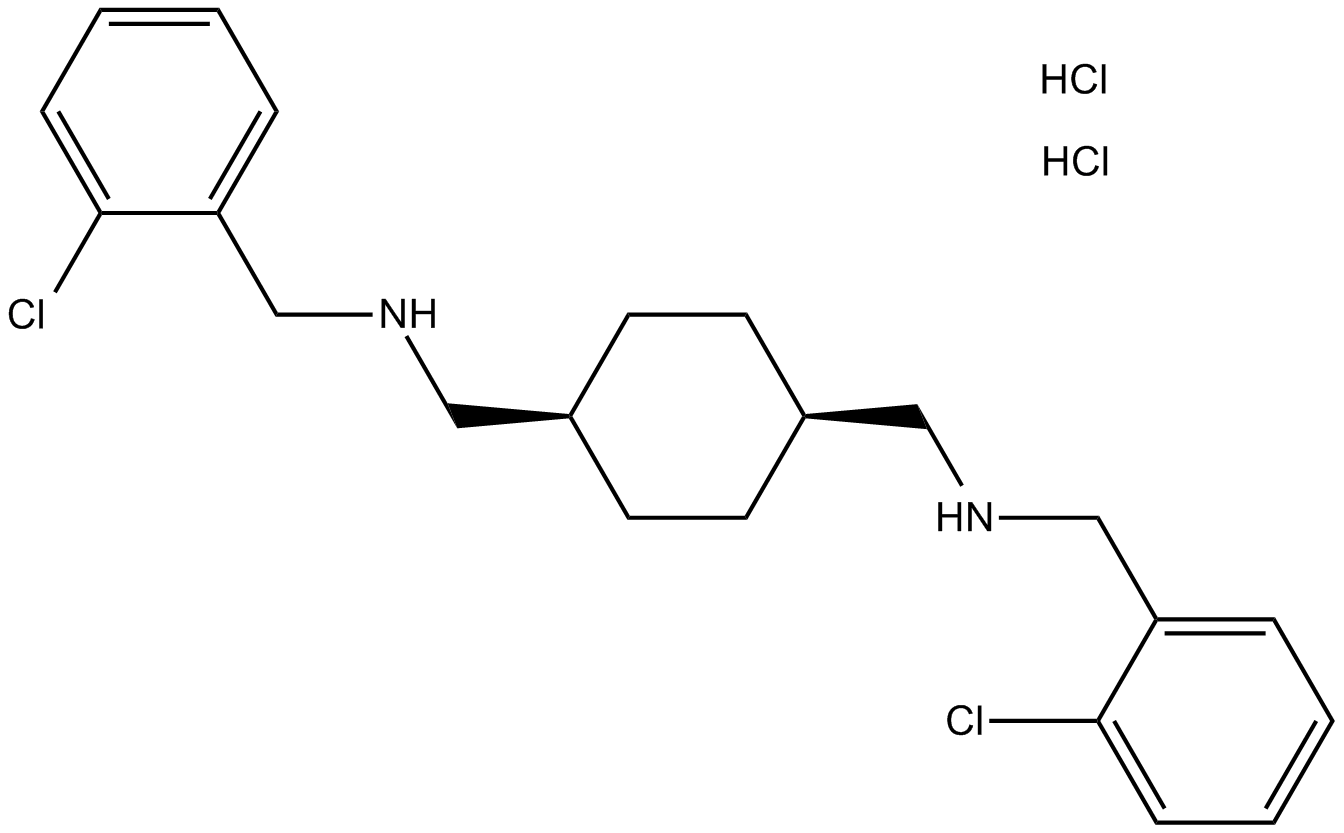AY 9944 dihydrochloride |
| Catalog No.GC12429 |
AY 9944 이염산염은 특정 콜레스테롤 생합성 억제제입니다.
Products are for research use only. Not for human use. We do not sell to patients.

Cas No.: 366-93-8
Sample solution is provided at 25 µL, 10mM.
AY 9944 dihydrochloride is a selective inhibitor of Δ7-sterol reductase with IC50 value of 13 nM [1].
Δ7-sterol reductase (Dhcr7) is an enzyme and plays an important role in catalyzing the production of cholesterol from 7-Dehydrocholesterol through using NADPH [2, 3].
AY 9944 dihydrochloride is a potentΔ7-sterol reductase inhibitor and has higher inhibition thanΔ7-sterol reductase inhibitor BM15766 and triparanol. When tested with Saccharomyces cerevisiae expressed cDNA without an N-terminal 9E10 c-myc epitope (mycD7-ORF) and 5’ noncoding region (D7-ORF), AY 9944 dihydrochloride exhibited highly inhibition on D7-ORF (recombinant humanΔ7-sterol reductase ) with IC50 value of 13 nM [1]. In PBMCs isolated from AIDS patients, AY 9944 treatment exhibited ability to restore the normal mitogenic responses and cytokine profiles [2].
In Sprague-Dawley rats model of Smith-Lemli-Opitz syndrome, administration of AY9944 elevated 7-DHC expression and reduced cholesterol in all biological tissues by inhibitingΔ7-sterol reductase [3].
References:
[1]. Moebius, F.F., et al., Molecular cloning and expression of the human delta7-sterol reductase. Proc Natl Acad Sci U S A, 1998. 95(4): p. 1899-902.
[2]. Achour, A., et al., Restoration of immune response by a cationic amphiphilic drug (AY 9944) in vitro: a new approach To chemotherapy against human immunodeficiency virus type 1. Antimicrob Agents Chemother, 1998. 42(10): p. 2482-91.
[3]. Xu, L., et al., Novel oxysterols observed in tissues and fluids of AY9944-treated rats: a model for Smith-Lemli-Opitz syndrome. J Lipid Res, 2011. 52(10): p. 1810-20.
Average Rating: 5 (Based on Reviews and 25 reference(s) in Google Scholar.)
GLPBIO products are for RESEARCH USE ONLY. Please make sure your review or question is research based.
Required fields are marked with *




















